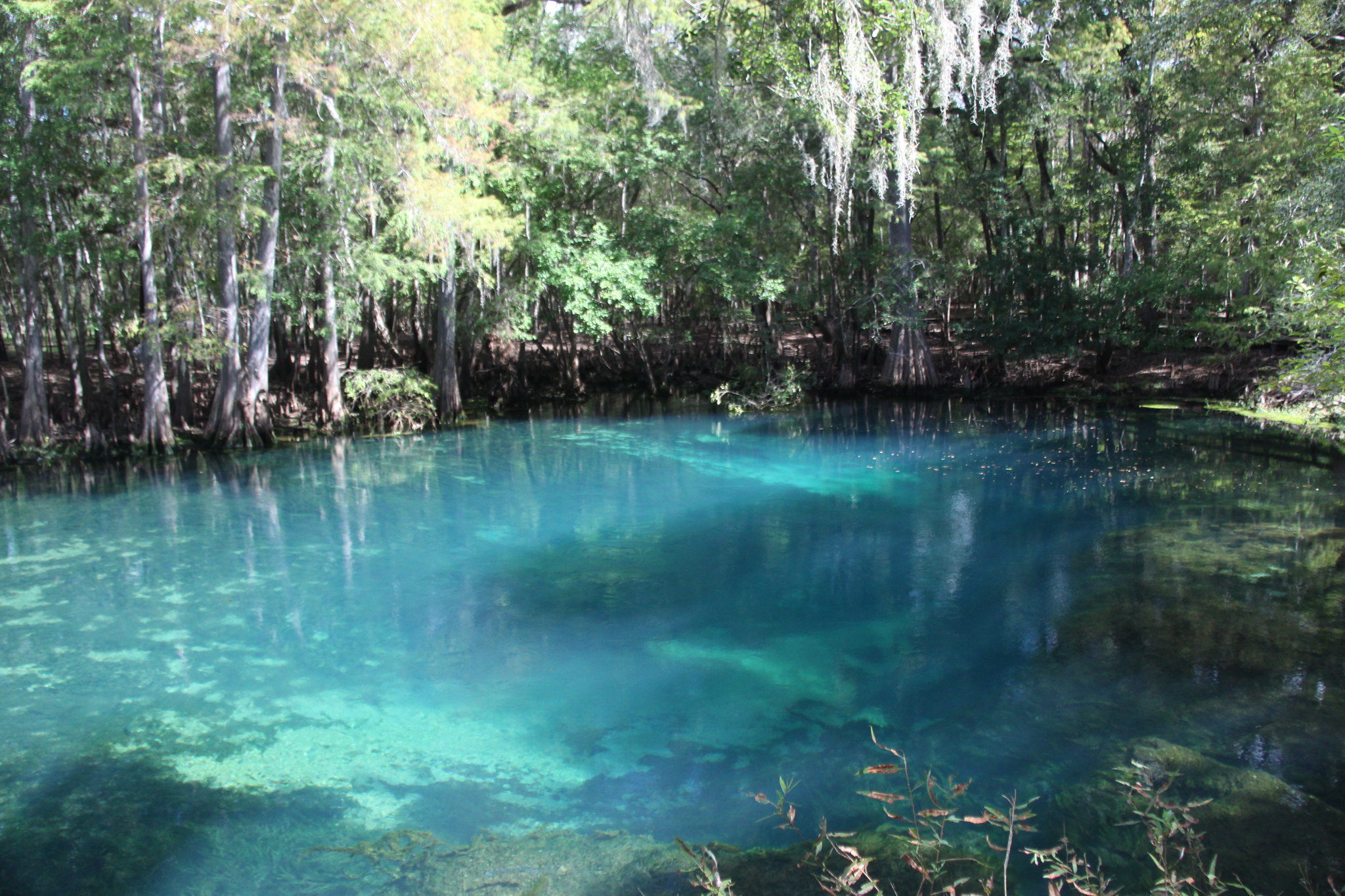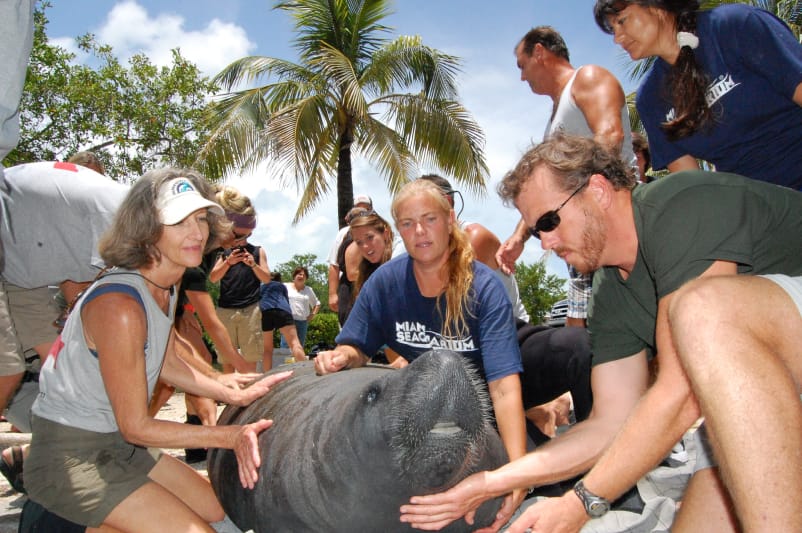
By: Kyle Grammatica
Florida has been blessed with incredible wildlife, most notably the state’s unique springs. These stunning reservoirs of crystal-clear, cool water provide people, plants, and animals with essential resources. Manatees use the springs for winter retreats, bears feed on the fish, and people use them as a source of water and recreation. Florida’s springs are nothing short of amazing.
Florida has the most springs out of all 50 states, and even more than most countries, thanks to a unique blend of the state’s geology and weather. Florida has large amounts of limestone beneath the ground that are very porous. These limestone deposits are close to the Florida aquifer system and help form springs. Their porosity makes it easier for water to flow through the ground, into the aquifer, and then out into springs.
Florida gets an average of 59 inches of rain each year. This high amount of rainfall also contributes to the formation of springs. Over millions of years, water goes through the water cycle many times and comes into contact with elements in the atmosphere and ground. The interaction with these elements causes rain to become slightly acidic. The slightly acid rain flows through Florida’s limestone and dissolves bits of it, creating new pathways for water to flow through. Eventually, more and more water is able to get through the limestone and into the aquifer. As new water comes in, the old water has to move out. When the pressure gets high enough, water is forced out back to the surface, forming a spring.
Florida springs are much cooler than the hot springs found in other parts of the world. This is because Florida’s springs flow from groundwater that is close to the surface. Hot springs are the opposite, coming from water sources that are very deep, causing them to be heated by geothermal energy.
Springs create ecosystems that house rare and endangered plants and animals like the manatee. The springs flow into rivers and support the areas around them as well. They are also a great source of recreation where you can SCUBA dive, snorkel, fish, and boat. Springs help scientists gauge the health of the Florida aquifer. If there are issues with the springs. it can indicate that the aquifer is being damaged, causing problems those relying on that water. Unfortunately, the springs and aquifer are showing signs of damage from pollution, erosion, and increasing demand for freshwater.
The Health of Florida’s Springs
Fertilizers, pesticides, and chemical runoff are responsible for much of the damage to Florida’s springs and aquifer. If left unchecked, this damage can become irreversible. Such was the case with Sulphur Springs in Tampa. Once a popular swimming destination, it was closed in 1986 because of pollution and street runoff. Over-consumption is also a threat. Everyday, billions of gallons of groundwater are used, and with the population of Florida increasing, the amount of water needed increases too. The aquifer is being depleted faster than it can be replenished, and as a result the water source of many springs have decreased. The depletion of the aquifer leads to more sinkholes being formed and reduces habitat for the plants and animals that rely on the springs that flow from it.
You can help protect Florida’s springs by reducing your use of pesticides and fertilizers and limiting water usage. You can also purchase the Protect Florida Springs license plate that directly supports the conservation of springs.











